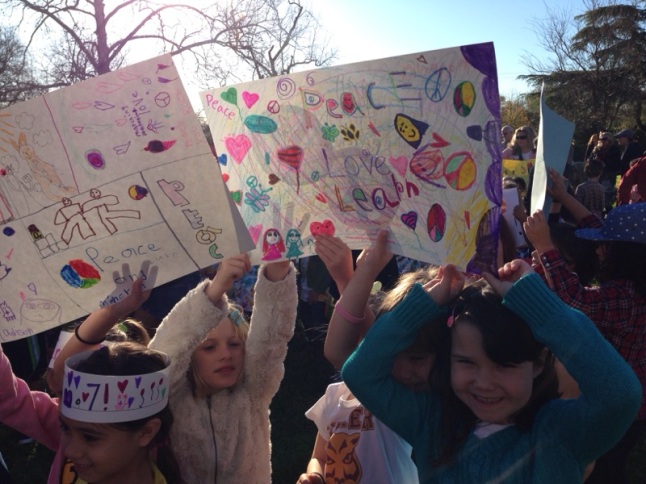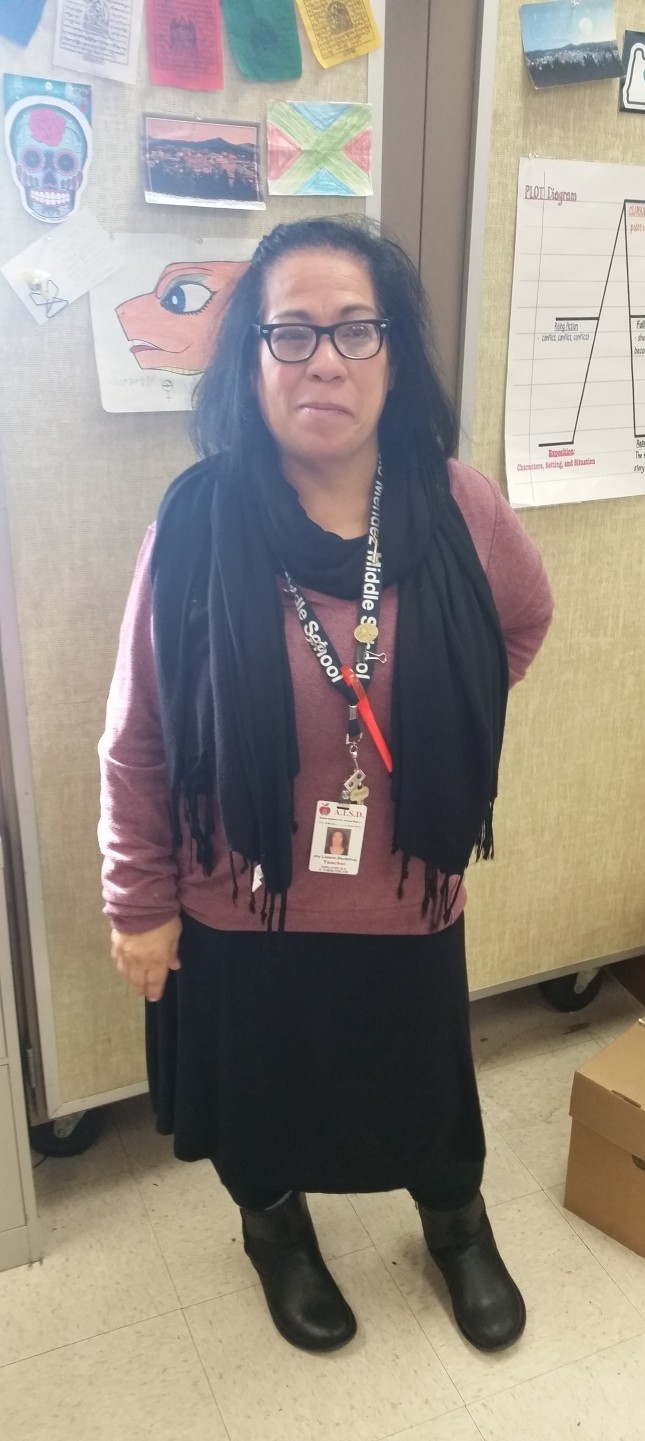Let’s be real: Teachers know Social and Emotional Learning. Teachers have been creating safe classrooms, welcoming students, building in 21st-century skills, and modeling healthy adulthood since schools were invented. We invited teachers from around the district to share their best SEL tips and advice for managing the stressful second semester, and so this post and the next one will be dedicated to showcasing the voices of competent, compassionate educators from our Austin ISD. For this one, dynamic duo Hannah Vaugh and Jenna Conde of Bedichek Middle School guest blog on the crucial topic of Teacher Self-Care.

Treat yo’ Self – brunch, happy hour, baths.
In our line of work, it’s easy to let your emotional well-being fall to the wayside. We give everything we have to our kids, and by the weekend we’re faced with mounds of papers to grade (why did I give this many short-answer questions?!), seating charts to re-arrange (there’s got to be SOME place to put Billy where he won’t be a vortex of chaos!), and bureaucratic nonsense filled with so many acronyms that by this point we don’t even remember what all those jumbled letters stand for. We are convinced that our work will never end, and with good reason: it doesn’t.
That’s why we need to make it a point to purposefully carve out our hard-earned “me time.” Put down the pen, close your laptop, and give yourself a second to grab half-priced appetizers (and other delicious things!) at happy hour on Friday. Give yourself a few hours to grab brunch with your long lost friends. When is the last time you soaked in the tub with your favorite record playing in the background? If you absolutely MUST do work, bring it with you to your favorite coffee shop for a change of scenery and a guaranteed morale boost. Look at you, grading those papers with your chai tea latte and a mouthful of eggs benedict, you rock star! It’s time to turn some of that unconditional love you’re always doling out back onto yourself. You deserve it!

Mentors/Cohorts
Everybody needs a hero. Even us heroes. A teaching mentor is a wonderful resource for both classroom and personal needs. A mentor is your go-to person on campus who can answer all your questions, provide classroom support, and comfort you when that lesson you planned so hard for fell flat on its face (you turned your back for one second…)
A group of trusted amigos on campus is another invaluable resource for emotional refreshment and well-being. Finding a person or group of people you can trust can be difficult in a workplace setting, but we promise that it’s worth investing time in the good ones. Knowing you’re not alone on those tough days, with people who will genuinely empathize with you, makes the struggle less real. Having a group of people to celebrate your accomplishments with, who will be genuinely happy for you when you are rocking it, leaves you feeling on top of the world.
Find people who will build you up, and who you can build up in return. It’s a beautiful thing!

You can say no sometimes.
This one goes out to all the first-year teachers, but it’s applicable to teachers of all experience levels.
It’s going to happen. You’re going to be minding your own business, probably in the middle of teaching a lesson, when an administrator or teacher will walk through your door. “Sorry to interrupt but…” Now they throw out a compliment, appealing to your vanity. “You did such a good job with x,y,z, and…” Here it comes. It’s a thing, and they want you to do/join/spearhead/tackle/organize. Sometimes you’ve got the energy, in which case FANTASTIC! Grab your clip board and get to work, you magical unicorn of a person!
But here’s the deal: if you don’t have the energy, or you can’t focus on whether or not you think you could handle it, or if you are already on six other committees and you don’t think you’d be productive on another one, IT IS OK TO SAY, “NO.”
Allow me to repeat myself.
IT IS OK TO SAY, “NO.”
And yes, they may try to persuade. “Well, you have to do SOMETHING.” (Guess what? You’re dedicating your time to molding the minds of children. You ARE doing something!) or “Oh, we just want to hone your leadership skills.” (Since when did you say you wanted to be a leader?) Don’t give in.
Somewhere along the road, our occupation became more than just teaching. Not only are we educators, therapists, moms and dads, advocates, social workers, and a whole other slew of emotionally exhausting professions, we are also expected to be superhuman. At some point a line has to be drawn, and you’re the only one who knows when to draw it.
By the way, saying “yes” can be amazing sometimes. It can be especially fun if you say yes and then drag someone into it with you, so you have all kinds of fun while you plan together.

Want to remember why you teach and make a bunch of people’s day? Positive Parent Phone Calls.
95% of our students are darlings. 95% come in, ask questions, have their binder, agenda, ISN, pencils, every single day—and yet, we spend the majority of our energy on our 5-10 challenging students that require frequent parent contact, one-on-one relationship building time, bargains, rewards, and unfortunately, consequences.
Look at your rosters and put some dots next to the students you forget to worry about—they’re so self-sufficient! Self-motivated! Next, of those, pick out the ones that are in the middle of the pack—grades, behavior, everything. Call those parents one after the other with a short and sweet “I appreciate your child’s hard work EVERY day. I am so impressed with their [participation in discussion/organization/perseverance when things get difficult].” The parents are so appreciative, excited, and grateful that they got some news from school that their student rarely warrants. Not only will this amp up your parent support and involvement, it will also remind that student that you NOTICE their effort, and possibly, keep them from turning to the dark side in May. On top of that, you feel great.

Laugh often and let it happen. Make like an improv class: Embrace your failures and literally have your class clap for you.
One of the first exercises that you do at an improv class is an exercise where you stand in a circle. Whenever you feel so inclined, you shout out to the group a recent failure of yours (i.e., last night I dropped an ENTIRE carton of eggs on the kitchen floor), and take a deep bow as everyone claps for you ecstatically. Then, someone else shares. It is no surprise how cathartic and humorous this practice is.
Next time you forget to make a set of copies, forget to project the Essential Question on the screen and then get mad when no one is writing it down, or call a student by the wrong name, just take a deep breath, say “I’m so sorry guys. I’m only a human.” Take a bow and have a round of applause.

Thanks, Ms. Vaugh and Ms. Conde, for your fabulous ideas, engaging writing, and rockin’ pictures! Stay tuned next week for more great thoughts and tips from even more amazing AISD teacher super heroes!

 This slideshow features photos from the first day of T.A. Brown at Allan and Reilly. Community partners and district employees enthusiastically helped teachers move their classrooms into the new spaces and provided lunch for them. Students and teachers participated in community circles and created paper name chains of support and connection to decorate their new classrooms. School leaders and collaborators greeted students and teachers at the door with balloons and welcoming signs. We are so #AISDProud of the T.A. Brown resilient community of learners!
This slideshow features photos from the first day of T.A. Brown at Allan and Reilly. Community partners and district employees enthusiastically helped teachers move their classrooms into the new spaces and provided lunch for them. Students and teachers participated in community circles and created paper name chains of support and connection to decorate their new classrooms. School leaders and collaborators greeted students and teachers at the door with balloons and welcoming signs. We are so #AISDProud of the T.A. Brown resilient community of learners!





















 The weekend of January 30th and 31st, hundreds of high school students descended on the Texas State Capitol to participate in the 69th annual
The weekend of January 30th and 31st, hundreds of high school students descended on the Texas State Capitol to participate in the 69th annual 































 …Encouraging event participants to create their own mandalas for peace.
…Encouraging event participants to create their own mandalas for peace.

















